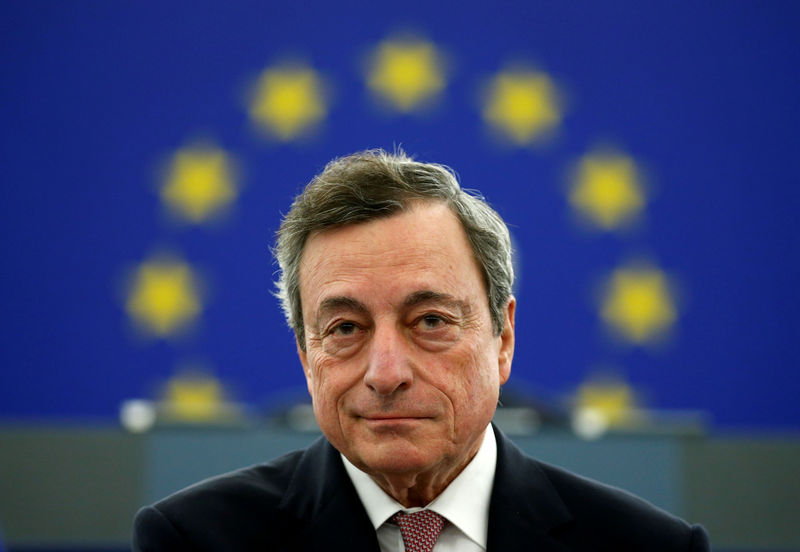(Bloomberg) -- Mario Draghi is leaving the European Central Bank with a final stimulus package that has divided colleagues and drawn doubts over its economic effectiveness, putting governments under renewed pressure to step up with fiscal policy.
His successor Christine Lagarde will inherit the presidency on Nov. 1 unsure how much more the institution can do to revive growth and inflation. Not only did Draghi’s plan to resume bond purchases and cut interest rates further below zero face unprecedented opposition in the Governing Council, but investors and economists aren’t sure it’ll work.
“They’re taking a hell of a risk with financial stability,” said Anatoli Annenkov, senior economist at Societe Generale (PA:SOGN) in London. “It’s locking Lagarde into a situation where she has to talk to finance ministers every day. The problem now is that markets will start asking ‘will fiscal policy act?’”
The ECB cut the deposit rate to a record-low minus 0.5% and said it’ll buy 20 billion euros ($22 billion) a month of debt for as long as needed. Rates won’t be raised until inflation is “robustly” in line with its goal of just under 2%.
Yet after initially rallying on the news, European government bonds gave up their gains. The euro, which weakened on the headlines, reversed its decline, and stocks swung between gains and losses.
The size of the QE program was a “disappointment,” as was “the fact that Draghi was quite explicit about the downsides of negative rates,” said Antoine Bouvet, a senior rates strategist at ING Bank NV. “This may be the start of a departure away from the bazooka approach that has caused so much controversy.”
The bazooka -- powerful measures, sometimes unconventional -- has been a hallmark of Draghi’s eight-year term as he fought off first a European debt crisis and then the economy’s stumble toward deflation.
The task of convincing skeptical colleagues has become harder. Thursday’s fractious meeting saw an unprecedented revolt in which Bank of France Governor Francois Villeroy de Galhau joined more traditional hawks including his Dutch colleague Klaas Knot and Bundesbank President Jens Weidmann to oppose QE.
That could make Lagarde’s room for large measures harder, despite her pledge in a European Parliament hearing this month to act with “agility” in restoring inflation.
Another issue is that there’s scant evidence that Draghi’s measures have worked. While the ECB argues that things would have been far worse had it not pumped so much stimulus into the economy in past years, updated forecasts on Thursday showed the central bank sees inflation at just 1% next year and 1.5% in 2021, well short of the institution’s goal. Economic growth projections were also downgraded.
For economists, the signal is that the ECB is near its limit. Draghi himself coupled the new monetary measures with an aggressive call on governments to join his efforts to support the economy. He said it is “high time for fiscal policy to take charge.”
Whether governments will heed the call he’s made for years -- albeit in softer tones -- remains open. Germany, with a budget surplus and rapidly declining debt burden, said this week that it’s sticking to its balanced budget. Chancellor Angela Merkel said there are plenty of investment projects already in the pipeline.
All the ECB might be able to do now is make the funding of such projects as cheap as possible.
“The impact of further easing on business and household spending is likely to be very small,” Florian Hense, an economist at Berenberg, said in a note. “By lowering funding costs further, it can make it easier for governments to finance a modest fiscal expansion and nudge countries with some extra fiscal space to actually use it – think Germany.”
